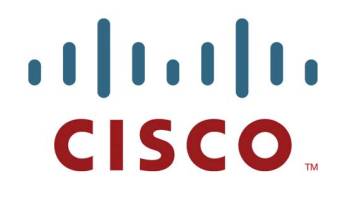Cisco Systems said that it has worked a deal with Microsoft to provide data centre virtualisation packages that will control Microsoft Windows Server 8 virtual environments on the Hyper-V hypervisor. All of Cisco’s previous virtualisation software works on VMware’s vSphere hypervisor.
This new software, called the Nexus 1000V Virtual Switch, marks the first such virtual networking collaboration project between Cisco and Microsoft.
Only three weeks ago at VMworld 2011 in Las Vegas, Cisco announced that it is investing in a great deal in virtual networking hardware, software and services . The Virtual Switch for Hyper-V, a key part of this research and development effort.
Launching With Windows 8
 The Virtual Switch is available inside the Cisco Nexus 1000V physical switch, which enables customers to create virtual networks that scale to support thousands of virtual machines. The company claims the switch also increases application performance and security in multi-tenant private, public and hybrid cloud infrastructures, said Soni Jiandani, senior vice president of Cisco’s Server Access and Virtualisation Technology Group.
The Virtual Switch is available inside the Cisco Nexus 1000V physical switch, which enables customers to create virtual networks that scale to support thousands of virtual machines. The company claims the switch also increases application performance and security in multi-tenant private, public and hybrid cloud infrastructures, said Soni Jiandani, senior vice president of Cisco’s Server Access and Virtualisation Technology Group.
Windows Server 8 is due out in 2012 and, when Microsoft names the day, the Virtual Switch will come out at the same time.
Key features of the Nexus 1000V Virtual Switch, as described by Cisco:
- Improved visibility, control and operational flexibility for Hyper-V environments; full security control in a virtualised environment consistent with a Cisco physical network
- Policy enforcement, automated provisioning and diagnostics are available; these help to rapidly deploy virtual workloads in Windows Server Hyper-V environments and scale to very large data centres
- When working with Microsoft System Centre Virtual Machine Manager (VMM) management tools, the Virtual Switch helps network, virtualisation and server administrators gain efficiency in managing multi-tenant and mobile virtual environments; it also helps obtain accurate, real-time data for troubleshooting of virtual environments
- Through integration with Cisco’s security software (Virtual Security Gateway and Virtual ASA), application optimisation software (Virtual Wide Area Application Services) and network monitoring software (Network Analysis Module), the Virtual Switch provides virtual machine-level security for multitenant environments
Bundling Up
Networking analyst Jon Oltsik of Enterprise Strategy Group told eWEEK that this collaboration between Cisco and Microsoft “gives Cisco the opportunity to do the kind of bundling that it does in the VMware space. It’s got vBlocks (pre-configured Cisco-EMC unified data centre systems) and the NetApp-VMware packages (both for vSphere), but it can now do the same type of thing with Hyper-V in the Microsoft space.
 “It goes beyond just the UCS [Unified Communications System]. With Microsoft now, there’s tight integration into the virtual network.”
“It goes beyond just the UCS [Unified Communications System]. With Microsoft now, there’s tight integration into the virtual network.”
Mike Spanbauer of Current Analysis told eWEEK that “while VMware may hold the dominant share for virtualisation platforms, Microsoft is No. 2 and clearly has aggressive plans to expand its virtual ‘footprint’ in the enterprise. Cisco, in turn, recognises the value of providing well-integrated solutions, regardless of the application vendor, and is investing to ensure customers needs are met — regardless of the virtual platform choice.
“Specifically, in order to manage a virtual machine, you must first see and follow it. This can be accomplished with either the platform’s virtual switch mechanism, or through another vendor’s. Cisco has a solid virtual switching story.”
Hot Topic
The virtualisation of networking functions is beginning to come up in more conversations involving IT managers, network administrators, and their current or potential vendors.
Virtual networking is just as it sounds. Ports, switches and routers are virtualised to work inside a hypervisor with virtual machines in similar fashion to how physical ports, switches and routers plug in to physical servers and storage arrays.
The two most common forms of virtual networks are protocol-based virtual networks (such as VLANs, VPNs, and VPLSs) and virtual networks that are based on virtual devices (such as the networks connecting virtual machines using the software noted above). Both forms can be used inside the same system.
The Tier 1 networking providers are all over this, and new companies are springing up around it. An example is Virsto, a California start-up that has virtualised streams of data into storage to make the data-movement process – which often involves a large number of data chunks located in widely disparate locations – much more efficient.
A little more explanation might be required here. “The virtual port gets affiliated with a physical port when the traffic comes out of a server and into the physical infrastructure,” Prashant Gandhi, Cisco’s senior director of product development for the Server Access Group, told eWEEK.
“That’s when the physical binding can occur. When a VM wants to talk to another VM on the same server, then it is traffic that will move from one virtual port through a virtual switch to another virtual port.”





